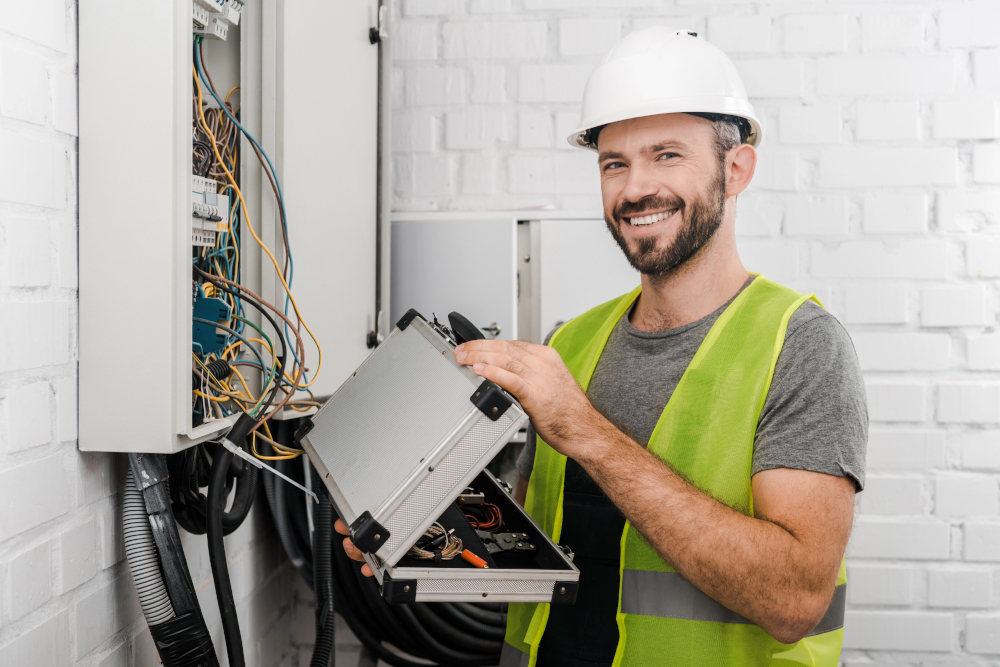What Will Fail An Electrical Inspection?
An electrical inspection is a necessary step in any home renovation, after completing a major DIY project, or when buying a new home. Its purpose is to make sure your electrical system is safe, functional, and up to the National Electrical Code (NEC). Failing this inspection can lead to costly repairs and significant delays. For homeowners, knowing the common pitfalls ahead of time can save both time and money.
Let us walk you through the most frequent issues that inspectors find, giving you a clear checklist to understand what will fail an electrical inspection in a typical home.
Problems with the Electrical Panel
The electrical panel, often called the breaker box, is the heart of your home’s electrical system and a primary focus for any inspector.
- Overcrowded Wiring: Each circuit breaker is designed to hold a certain number of wires. When too many wires are stuffed into the panel, it creates a fire hazard due to overheating and potential short circuits. This is a common issue in older panels that have been modified over the years.
- Double-Tapped Breakers: This occurs when two wires are connected to a single-pole circuit breaker that is only designed for one wire. This improper connection can lead to a loose wire, causing arcing and overheating. This is a clear code violation.
- Lack of Proper Labeling: Your electrical panel should have a clear and accurate label for each circuit breaker. If an inspector cannot tell which breaker controls which part of the house, it will be noted as a safety concern for future maintenance and emergencies.
- Outdated or Recalled Panels: Certain brands of electrical panels, such as Federal Pacific Electric (FPE) or Zinsco, are known to be faulty and are often subject to recall. These panels have a reputation for not tripping during an overload, which is a major fire risk. An inspector will likely fail the inspection if one of these panels is present.
Incorrect Outlet and Switch Wiring
Faulty work at the outlet and switch level is another leading cause of inspection failures.
- Reversed Polarity: This happens when the “hot” and “neutral” wires are connected to the wrong terminals on an outlet. Even though devices plugged in may still work, this creates a serious shock hazard because parts of the appliance that should be neutral remain energized.
- Open Grounds or Missing GFCI Protection: Modern code requires outlets in kitchens, bathrooms, garages, and outdoor areas to be Ground Fault Circuit Interrupter (GFCI) protected. These outlets protect you from severe shock in damp areas. An inspector will test all outlets to make sure GFCIs are installed where needed and that they trip correctly. An open ground, where the grounding wire is not connected, is also a common failure.
- Loose Outlets or Switches: Outlets that wiggle in the wall or switches that feel loose indicate a poor connection behind the wall plate. This can cause arcing and overheating. Proper outlet & switch installations are not just about looks; they are a fundamental safety requirement.
General Safety Hazards Throughout the Home
Inspectors are trained to look for specific safety violations that pose an immediate risk.
- Missing or Damaged Cover Plates: Every electrical box must have a cover plate. Missing plates expose wiring, creating a shock and fire hazard. Cracked or broken plates also need to be replaced.
- Improper DIY Work: This is a broad category that includes things like using the wrong type of wire for the application, making poor wire connections without a proper junction box, or using a light fixture as a connection point for other wires. Amateur work is often easy for a trained professional to spot and is a major red flag.
- Overloaded Circuits: If too many power-hungry appliances are running on a single circuit, it can cause the breaker to trip frequently. While a tripping breaker is a safety feature, an inspector may note that the circuit is overloaded and requires a dedicated circuit for certain appliances.
- Lack of AFCI Protection: Arc-Fault Circuit Interrupters (AFCIs) are required in most living areas like bedrooms and living rooms. They are built to sense hazardous electrical arcing and cut the power to stop a potential fire before it starts. The absence of AFCI protection in required areas is a code violation.
How to Prepare and Why It Matters
The best way to avoid the stress of a failed inspection is to be proactive. If you are unsure about the state of your wiring, scheduling a professional electrical inspection service can identify these problems before the official inspection. A qualified electrician can correct issues like double-tapped breakers, install GFCI and AFCI outlets, and make sure all work is up to code.
Understanding what will fail an electrical inspection empowers you as a homeowner. It highlights that the electrical code is not about arbitrary rules, but about proven safety standards that protect your home and family from fire and electrocution. For a routine residential electrical inspection or a specific electrical panel inspection, addressing these common issues beforehand leads to a smoother process and, most importantly, a safer home.
